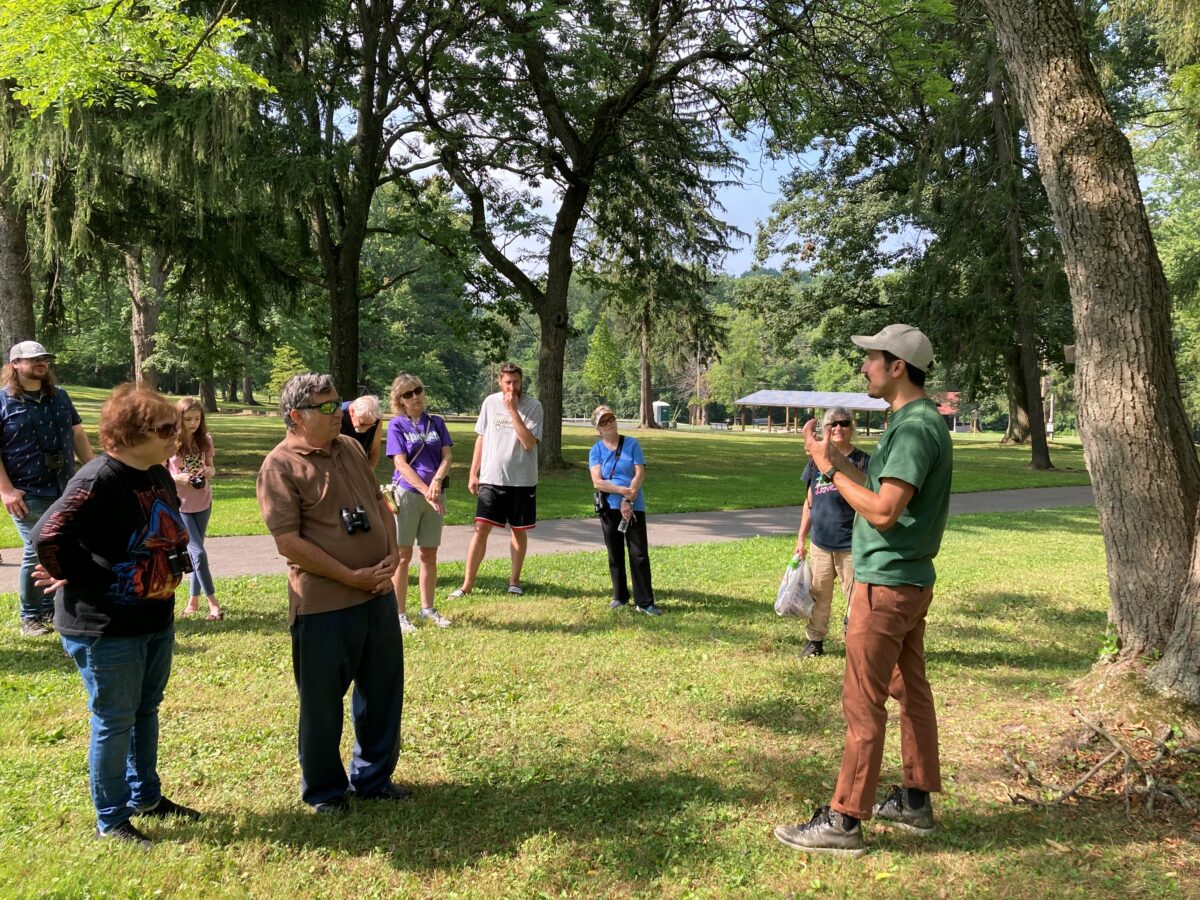The Audubon Society had been counting birds at Christmastime nationally for 124 years, and Western Pennsylvania and Pittsburgh has been part of that endeavor since 1910.
This year, though, will mark a first — additional count locations in the Mon Valley this Sunday.
The Christmas Bird Count is the world’s longest-running citizen science project, according to an Audubon Society of Western Pennsylvania news release, and it takes place between this Thursday and Jan. 5. People of all ages and birding experience count birds that they see on the dates, then the data is compiled and used to measure changes in bird populations and the environment. This wealth of information paints a clear picture of bird distribution and abundance while aiding in the understanding of the urgency of bird conservation, Audubon leaders said in the release.
Residents can join in the bird count at three additional locations as well as in their own backyards:
- Buffalo Creek Valley, which includes Todd Nature Reserve and Buffalo Creek Nature Park, on Saturday, Dec. 16.
- Pittsburgh, including Beechwood Farms Nature Reserve, Fox Chapel, on Saturday, Dec. 30.
- South Butler, including Succop Nature Park, Butler County, on Sunday, Dec. 31.
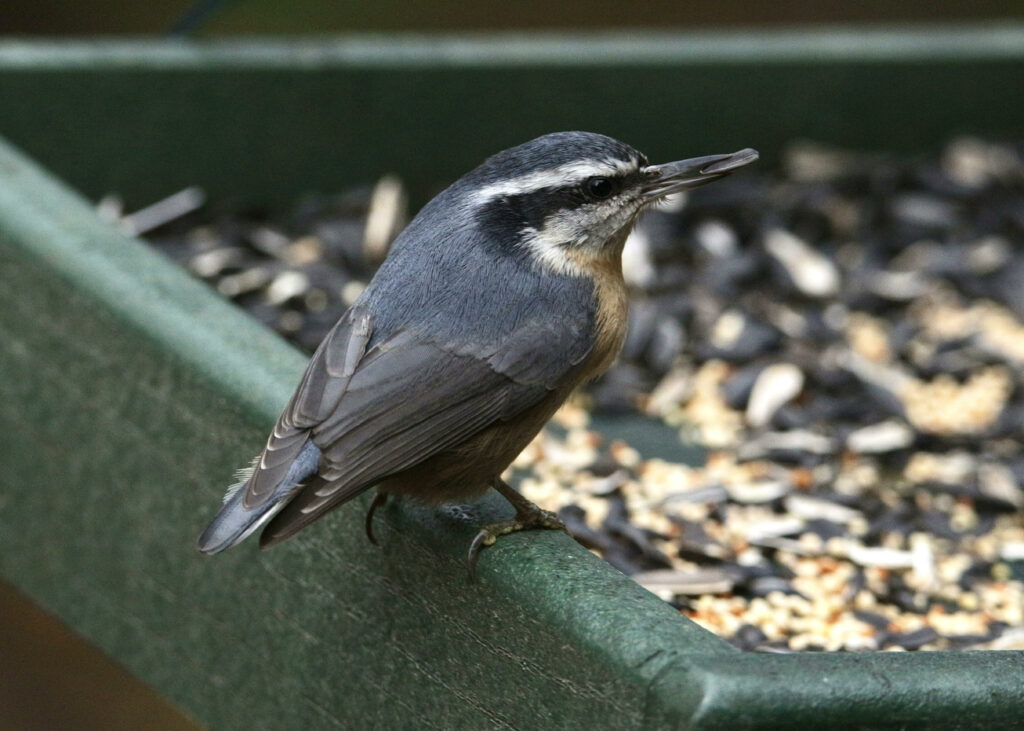
Participation is free and prior experience is not necessary, leaders said. New birdwatchers will be teamed up with experienced birdwatchers. More information on the bird count is on the society’s website, and a complete list is on an events calendar.
Audubon opened a satellite office in McKeesport this year, and it has a number of partners and municipalities involved in the bird count and other activities as part of a two-year initiative in the Mon Valley. In addition to the bird count in Renzie Park on Sunday from 9 a.m. until noon, residents can also participate in guided walks and counts at two other sites:
- White Oak Park, Magnolia Shelter, from 10 to 11:30 a.m., led by the Allegheny County Park Rangers. Registration is available at the Allegheny County Parks site.
- Dead Man’s Hollow GAP Trail entrance, near McKeesport, from 8 to 11 a.m., led by the Allegheny Land Trust. Registration is available at the Trust site. Note: this program has a $5 entry fee.
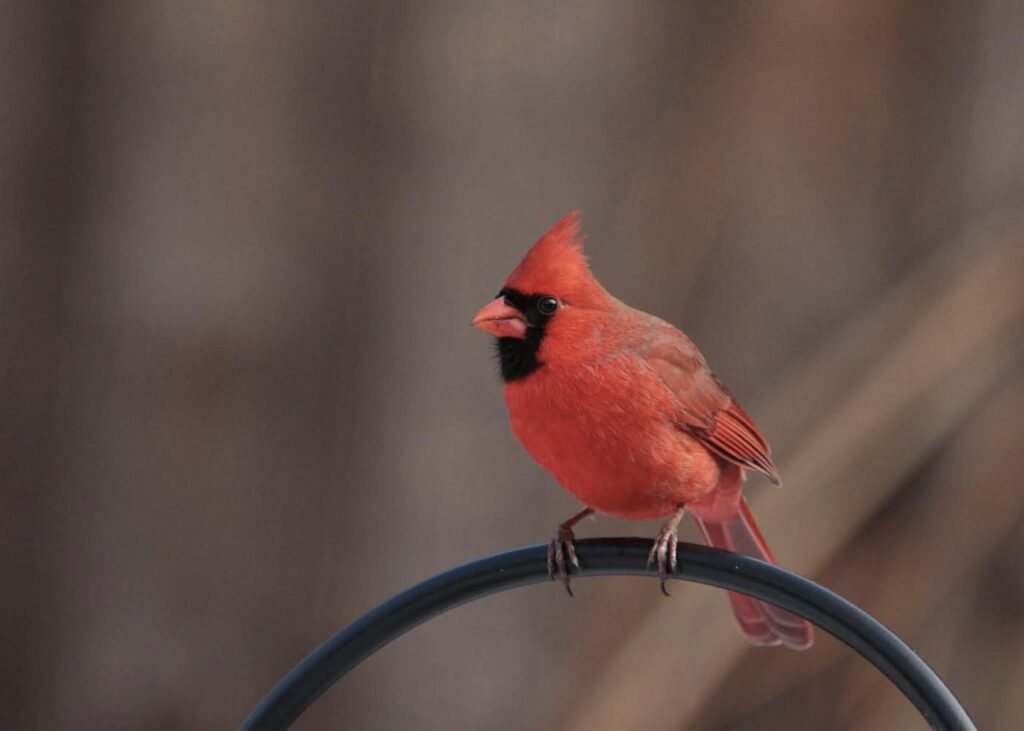
Rachel Handel, Audubon Society of Western Pennsylvania communications director, said the region’s participation in the bird count has been strong every year, with additional circles joining in and people coming back year after year. A good example, she said, is in North Park, which also includes a children’s project.
The society does not set goals for the count, but rather the objective is to recruit as many people as possible, which is often dependent on location and weather. Last year, Western Pennsylvania’s 149 field observers and 36 feeder watchers tallied 39,997 birds on Dec. 31, 2022, according to the local group’s website.
Audubon has had a warm welcome from the Mon Valley since the project’s announcement in February. “The reception has been really amazing,” she said. We’ve worked in five communities. Especially McKeesport — it has been a really great partner.”
Dravosburg, South Versailles, Versailles and White Oak are the other communities. The Tri-COG Land Bank and the McKeesport School District also participate in the effort, which is funded by Richard King Mellon Foundation and Environmental Protection Agency grants.
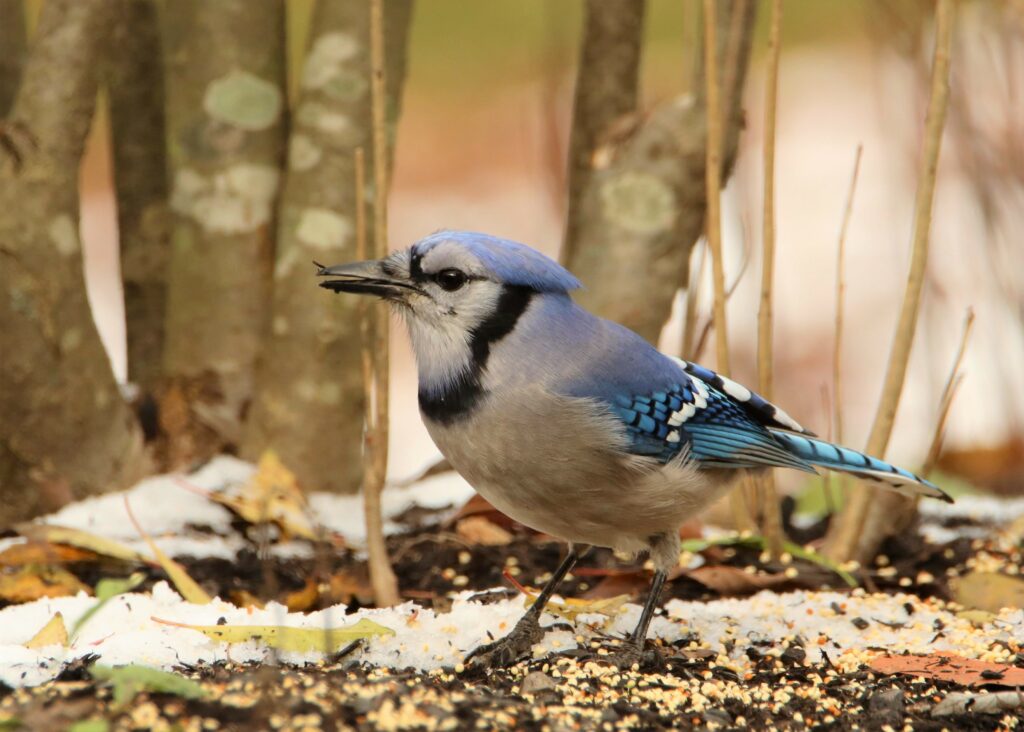
Ben Kehoe, the community conservation coordinator based in McKeesport, said the project is a collaboration. “We wanted to be sure we can reach out to the communities that we serve and make it as easy as possible for people to gain access to our programs. [There are] barriers that prevent people from getting to Fox Chapel and Butler. These grant opportunities have enabled us to do a lot of great work in the Mon Valley.”
That included monthly walks in Renzie Park and certified backyard habitats project to attract and support bird, insect and animal species in the Mon Valley.
Sixty residents now have those habitats on their property, an effort that Kehoe stressed will help birds survive. The project gave out 1,000 native plants this summer, ones that fit the spaces, which he stressed is important.
Kehoe’s office is located on the third floor of McKeesport’s City Hall building, and he is learning more about the city and area and its organizations in this foundational year. The monthly bird walks will continue in 2024, and he will offer a Winter Birds and Where to Find Them free program on Jan. 20 from noon to 1:45 p.m. at the McKeesport Regional History & Heritage Center, 1832 Arboretum Drive, in Renzie Park.
This year residents from all five communities have taken advantage of what has been offered, including the Feathers and Flowers talks at the McKeesport Senior Citizens Center. Other programs will be developed with community input, he said.
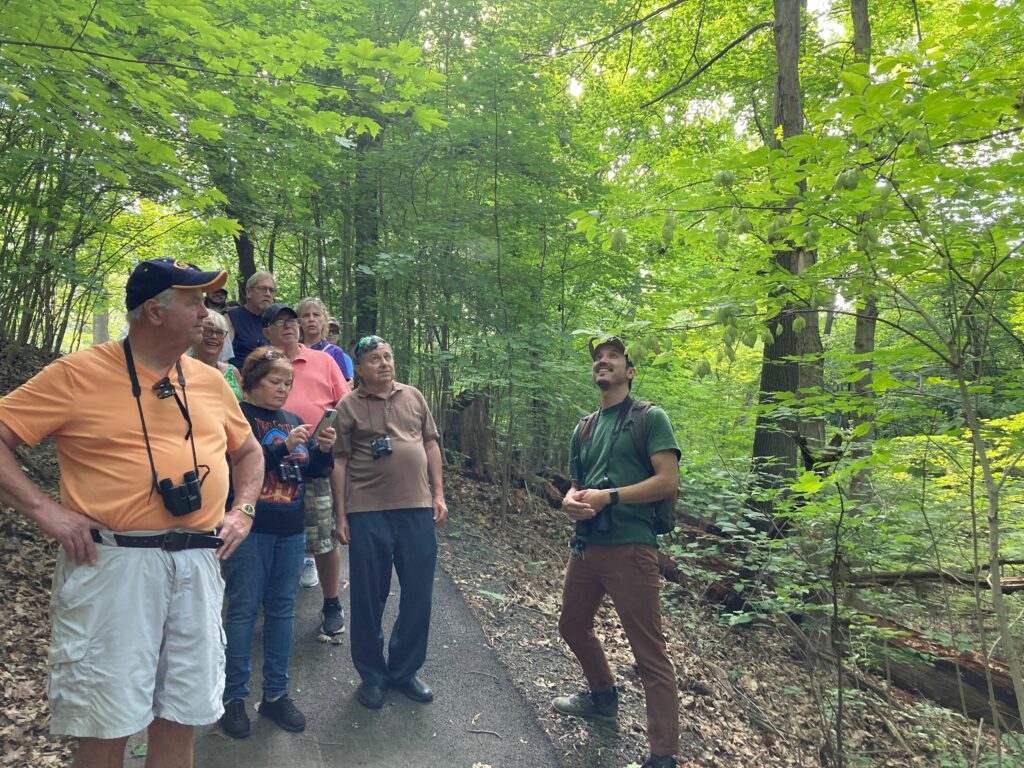
“It seems people are really excited about the type of programming we can bring there,” said Kehoe, 45, who started with Audubon on May 1 after working for the Allegheny County Park Rangers for three years and a Student Conservation Association program coordinator before that. “There is an audience in McKeesport and the Mon Valley,” the Coraopolis native said. “And [we learned] just how beautiful it is around McKeesport. People don’t give it a lot of credit. We found a lot of beautiful birds and beautiful plants.
“People have been going there [to Renzie Park] for years. I’m pointing out the things that people never noticed in all the years they have been there. People were really delighted to find out all these things in park they really love.”
He said the bird count participants can bring binoculars to help spot birds, and if they don’t, he will have some to share. The count is on regardless of rain, snow or shine.
Kehoe said the count will see resident birds who stick around here all year round, as well as other birds that come from the extreme north, the tundra in Canada. His favorite? The golden-crowned kinglet. “They are really tiny birds, smaller than chickadees,” he said. “They are insectivores [that] only eat insects. They come down here and stay all winter. Then head north as soon as it warms up and their breeding grounds in Canada.”
Experienced birders will help count participants connect sound and location for the birds. Each participant, whether they are in the count circles or their own backyard, will be asked to submit a form to the Audubon Society on their specific day.
He said interested residents can come on Sunday for the entire time or for however long they want to do it.
“We’ll be doing the walk, and then people get a general idea of the birds around that time of year,” Kehoe said. “They are also invited to go home and do the bird count. We regard this as a primer.
“You have to be very patient, and then you start to notice more and more birds. It improves your observation skills,” he said. “And you will see a whole lot of other things [around you], just by paying attention to birds.”
For more information on the Christmas bird count, contact:
- Mon Valley CBC, Ben Kehoe at bkehoe@aswp.org or 412- 904-7486.
- Pittsburgh CBC, Brian Shema at bshema@aswp.org or 412-963-6100.
- Buffalo Creek Valley or South Butler CBC, Chris Kubiak at ckubiak@aswp.org or 412-963-6100.
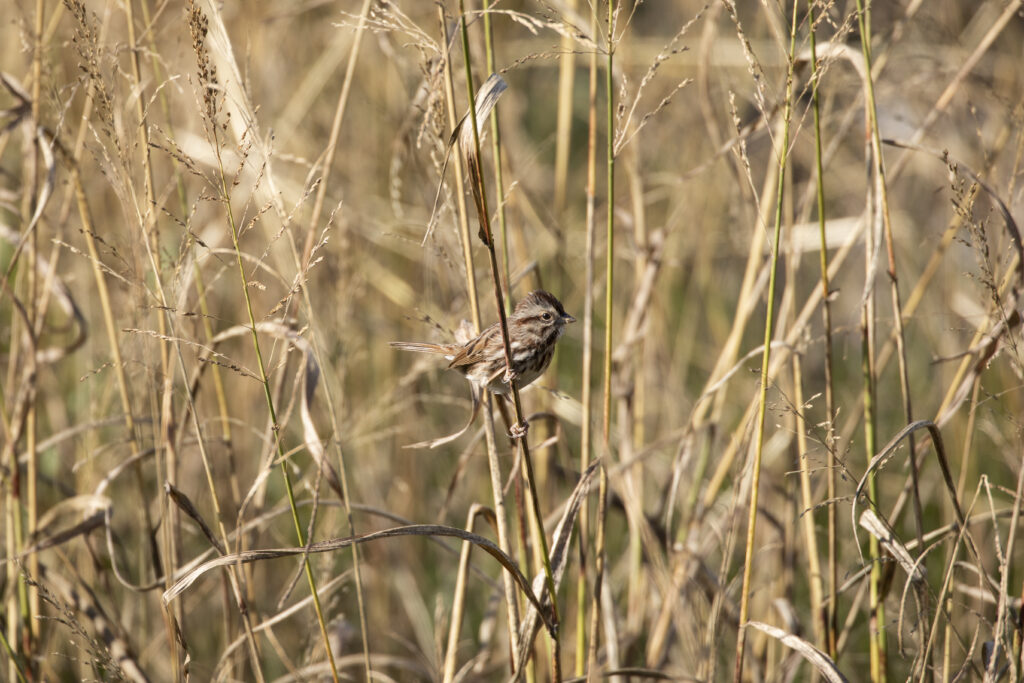
Helen is a copy editor at the Pittsburgh Post-Gazette, but she's currently on strike. Contact her at hfallon@unionprogress.com.

